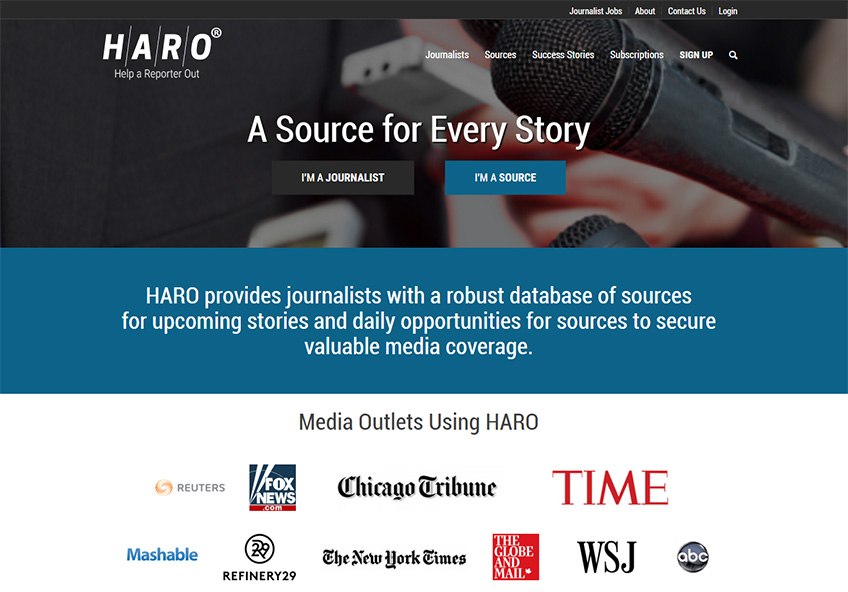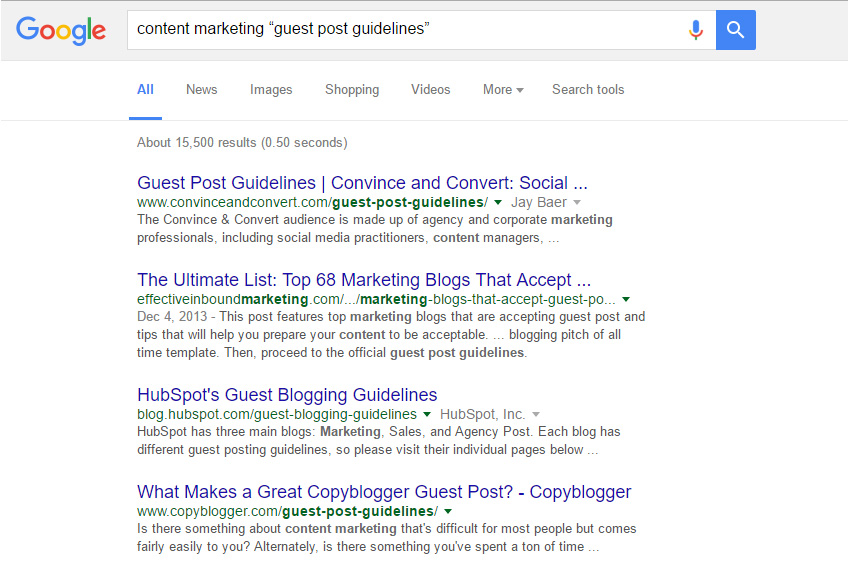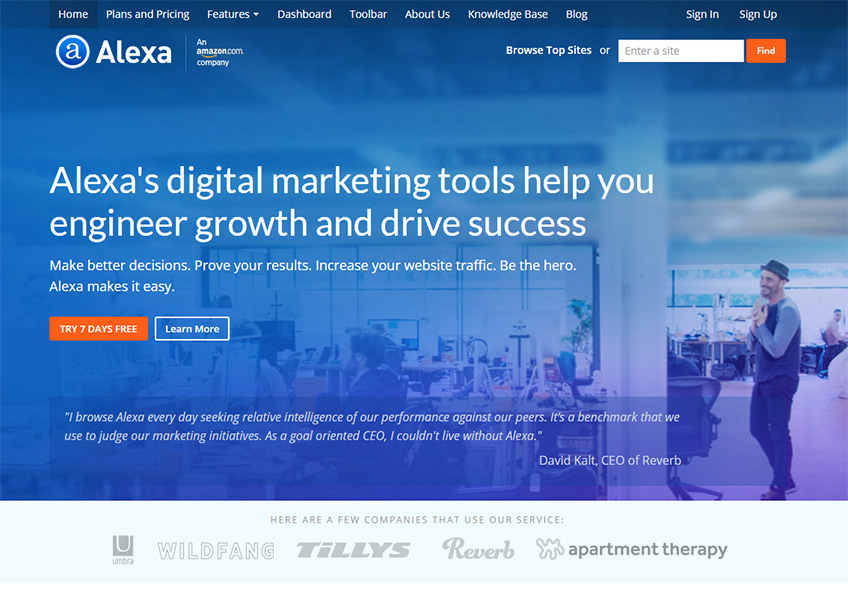If you’re looking for the best way to rank a website, but your afraid of getting penalized, like so many have — then it’s probably a good idea to take advice from a company that’s the undisputed leader in search engine technology: Google.
It was welcome news to many SEO professionals recently when Google spilled the beans about the top criteria its search algorithm uses to determine placement in the search engine results pages (SERPs). Google calls those criteria “ranking factors.”
Which ranking factor is the best? The search giant is still hush-hush about which one is the best, but it has disclosed the top three ranking factors.
Among those top three: backlinks.
In this article, we’ll cover Google’s admission that backlinks work well as an SEO strategy, look at backlinks in general, and share some of the best ways to build backlinks to your own website without getting penalized.
Backlinks Boost Brands
The exact “formula” that Google uses to determine where pages appear in the SERPs is unknown to most of us outside of Google’s headquarters in Mountain View, California. Every once in a while, though, the company opens a curtain and gives us a brief glimpse of what’s going on inside.
That happened recently.
Late last year, Google announced the existence of an artificial intelligence system it uses to process search results. It’s called RankBrain.
During the announcement, Google also said that RankBrain was the third most important ranking factor. That admission led many curious SEO practitioners to ask: “If RankBrain is the third most important factor, what are the first two?”
At the time, Google refused to say.
It didn’t take company executives very long to realize that they looked silly by telling the world about the third most important ranking factor and not saying anything about the first two. So, a little while later, the search giant filled in the gaps.
During a Q&A with Google, Search Quality Senior Strategist Andrey Lipattsev (reluctantly?) admitted that the first two ranking factors were the content itself and the backlinks pointing to the site.
Those are in no particular order, though.
From the Horse’s Mouth
SEO professionals have suggested for a long time (with good reason) that backlinks boost rank. Recently, Google admitted that backlinks are still an essential part of gaining search engine visibility.

However, Google also says that you shouldn’t buy links in an attempt to improve your rank.
Google says that a backlink profile is among the top two ranking factors that it uses to determine where to place a page in the SERPs.
That leads to the obvious question: How can you build backlinks while still playing by the rules?
The Components of a Great Backlink
Basically, backlinks are links on other websites that point to your own site. They’re called backlinks because they link back to your site.
There are two important components to a backlink. The most important part, arguably, is the link itself. That’s the URL pointing to your site.
The second part is called the anchor text. That’s the word or phrase in the article that the reader clicks on to follow the link. Usually, the anchor text appears on the page in a different color and is underlined to let the reader know that it’s clickable.
What Goes in the Anchor Text?
It was once considered de rigueur to include relevant keywords in the anchor text. For example, if you’re trying to rank a site that sells kitty litter, SEOs would use “kitty litter” as the anchor text.

Those days might be gone forever.
Why? Because the practice of trying to rank for specific keywords by stuffing those words in anchor text has been abused to such an extent that it can act as a red flag to Google’s search bot.
Publishers naturally use the domain name, brand name, or just a relevant-but-not-keyword-stuffed sentence fragment to link back to the site. Then, they leave it up to the Google search bot to determine what that site is all about. If the web page has great on-site SEO, it won’t be a problem for Google to determine its purpose.
To Follow or Not to Follow, That Is the Question
For years, SEOs have said that every link should be a “dofollow” backlink and that “nofollow” links are a waste of time. That’s not really the case.
All links are, by default, “dofollow” links. That means the Google spider that crawls all over cyberspace will follow those links and give credibility to them based on where the link originated. SEO professionals who’ve been around the block call that credibility factor “link juice.” Google calls it “passing page rank.”
On the other hand Google’s spider won’t follow a “nofollow” link (hence the name). As a result, it won’t pass link juice to the linked site. That means you can work very hard to get a link on a popular website, only to realize later on that the links on the site are “nofollow” and won’t boost rank.
There’s a flip-side to that coin, though. It’s usually a good idea to have a mix of “nofollow” and “dofollow” links. That’s because the Google search bot might raise a red flag if all of your backlinks are “dofollow.” Plus, you can still get traffic from “nofollow” links on popular sites (Wikipedia, for example) even though the Google bot doesn’t follow those links and pass any link juice.
It’s good to be able to tell if a hyperlink has a “rel” attribute set to “nofollow”. To do that, open the web page in your browser and click “CTRL+U” to view the page source. Then, hit “CTRL+F” to pull up the View Finder. You should be able to locate the link by just typing in the anchor text.
Here’s what a “nofollow” link looks like:
<a href="http://mysite.com" rel="nofollow">Anchor text here</a>Keeping It in Context
There are also “contextual backlinks.” Those are, perhaps, the most important types of backlinks.
A contextual backlink is a backlink that appears in the content of an article. That’s in contrast to links that appear in the sidebar, header, or footer of a page.
You see contextual links in articles all the time. Heck, you’ve seen them in this article. They’re useful for writers because they provide a source for a claim that’s being made.
Keep in mind, though, the “contextual” part of a contextual backlink. Any link back to a site should be relevant to the subject of the article. For example, if you’re trying to rank a site that sells kitty litter, you should include a backlink in an article about cats or kittens, not an article about nuclear physics.
Backlinks need to be natural, period.
A Tale of Two Hats
There is a right way and a wrong way to build backlinks to your site. The right way will help rank your site. The wrong way will get your site penalized by Google and ruin your SEO efforts.
“White hat” SEO tactics follow the Google Webmaster Guidelines. Their strategies usually take a while to work, but they typically offer long-term benefits.
“Black hat” SEO tactics, on the other hand, take shortcuts. They use tools to create backlink spam on low quality sites. They try to hide their identity with IP proxies. They use article spinners to rewrite content they’ve found online so they can avoid duplication penalties.
Black hatters try to game the system to make a buck. White hatters focus on the big picture and create a natural-looking backlink profile. That’s the difference in a nutshell.
Private Enterprise
Some black hatters have found a clever way to build backlink profiles for client sites. They’ve built their own private blog network (PBN).
Instead of trying to get backlinks on other sites, they’ve created their own massive network of blogs – hosted by different hosting companies and using different site software – and then offer to sell links on their blog networks to people for a fee.
Here’s what they do: they regularly shop for expired domains that already have a healthy backlink profile. Then, they buy one of those domains for a nominal fee and set up their own blog using that domain name.
Rinse and repeat. They do that over and over again until they’ve created dozens of their very own blogs. They regularly post content on those blogs to make them look natural.
In reality, though, those PBNs are nothing but link farms. In the past, Google has penalized link farms. Even a brand as prominent as J.C. Penney got penalized for using link farms.
Yeah, But…
It’s beyond dispute that some black hat efforts have been successful in the past. But Google eventually discovers what those people are doing and penalizes their sites accordingly.
It’s worth noting that the black hat tactics that work today probably won’t work tomorrow. If you have a friend who ranked a site with a black hat strategy, that doesn’t mean it’s a great idea. Google is always on the hunt for people who are trying to manipulate its search algorithm.
In short, if you want to rank your site and avoid a penalty, put on the right hat.
The Big Question
By now, you might be thinking to yourself: “Sold. There’s no way I’ll ever do that black hat stuff.”
Once you’ve established that conviction, the next question you might ask yourself is: “If Google says you shouldn’t focus on link building, but building links is important for SEO, then how the heck to do you get links without getting penalized?”
Glad you asked.
Digital PR
These days, the online marketing world is all abuzz with its latest favorite industry phrase: “Digital PR.”
Digital PR, like regular PR, involves using the media as your advertising vehicle. The biggest difference between PR and advertising is that advertising is paid media while PR is earned media.

A great Digital PR effort combines traditional PR with traditional online marketing tactics, like content marketing and social media marketing. It’s a strategy that involves spreading your great content around cyberspace to such an extent that people in the media can’t help but notice.
When that happens, some of those folks in the media might reach out to you for an interview, ask to profile your company, or write an article about the amazing product or service that you’re offering.
As with “old-school” PR, that’s a win-win. You get free press and the reporter gets a great story.
The biggest benefit is that those “old-school” media outlets are all “new-school” as well. They don’t just run print publications, they also have websites.
Websites give them the opportunity to link to your site. Do you see where this is going?
With Digital PR, you’ll not only generate word-of-mouth buzz about your site, you’ll also get a backlink from a reputable news organization or blog. Since those media outlets often have high authority with Google, you’ll be giving your site some link juice.
Here’s what a natural backlink from a media site looks like:
John Doe, CEO of ABC Company, says: “Kitty litter shouldn’t use harsh chemicals for the health of the cat as well as the homeowner. We offer a solution that’s cleaner and more natural than other options.”
In that paragraph, the “ABC Company” text would be the anchor text in a backlink. As you can see, the backlink also looks natural. That’s because it is natural.
Use the Scattershot Technique
So how can you get noticed by a reporter looking to meet a deadline? There are several ways.
One of the best is to just be as visible as possible. Spread your content to the farthest reaches of cyberspace by sharing it on various social media channels and asking friends and family members to link to it using their own personal blogs or social media channels.
It’s been said that part of success is being in the right place at the right time. If that’s true, then try to tilt the odds in your favor by being everywhere all the time.
In this case, that means gaining maximum exposure for your brand by using all legitimate channels to promote it. The more buzz you generate for your business, the more likely it will get noticed.
Repurpose Content
Way too many digital marketers are under the impression that they can only promote an article once. That’s simply not true.
Smart marketers know how to maximize the use of their time and generate buzz by repurposing old content.
If there’s some great evergreen content on your site that’s fallen off the first page and is in the more remote regions of your blog, you can give it new life by reusing it. Post a link to it on a social media channel. Give a little synopsis of it on a LinkedIn post and link back to it. Create a SlideShare presentation from it. Use the nature of the content to create a great video and upload it to YouTube. Start a podcast series with it.
On some occasions, it might even be a great idea to rewrite the article with updated information. Then, the published date will move the post to the top of your blog again. It might even land on the home page (depending on how you display your top blog posts).
Remember, though, that you don’t want to duplicate the content. It’s a very bad idea to just copy and paste the entire article into a new blog post. Google will likely penalize you for that.
Give a Helping Hand
If you want to generate buzz about your brand, use it to do something charitable.

Find a cause that you believe in (it’s best to pick one that’s not controversial, like “cancer research”) and use your brand to promote awareness about it. That means you should sponsor events, appear in-person to help out at certain functions, and speak publicly about the cause as much as possible.
If you decide to go the charitable route, you’ll commit yourself to a cause that you think is great while simultaneously increasing the exposure of your brand. What’s not to love about that?
Apple, for example, gives donations to non-profit organizations where employees volunteer. Other well-known companies, like Google, Microsoft, and Shell also practice corporate philanthropy.
Give a Helping Hand, Part Deux
Another (much more selfish) way to lend a helping hand is by offering your expertise to a reporter. That means you’ll be a “source” that the reporter quotes in a news piece.
Of course, when the reporter quotes you as a source, he or she will also have to include your company name. That name will likely be anchor text in a link back to your site.
Fortunately, there’s a great site that gives you an opportunity to help a reporter out. It’s called Help A Reporter Out (HARO).

Jump on HARO and list yourself as a source. Describe your areas of expertise so that you’ll be contacted for the right reasons.
When you are contacted, be sure to be as polite as possible. Remember Mark Twain’s advice that it’s never wise to pick fights with people who buy ink by the barrel.
Be sure to spell your name and your company name very clearly if you’re being interviewed over the phone. You might be surprised at how often novice reporters misspell proper nouns.
Also, don’t hesitate to ask the reporter for a link back. Most of them understand that your time is valuable and agree that you should get a little kickback for offering your services as a source. They’re usually more than happy to provide the link.
Finally, don’t be afraid to reach out to reporters on LinkedIn. Connect with them and let them know that you’re happy to be a source.
Guest-Blogging
Another great way to get your brand noticed is by guest-blogging. That’s when you post great content on another person’s site and include a backlink to your own site.
If you’re not sure where to start with guest-blogging, digital marketing guru Neil Patel offers some great advice. Just Google the name of your niche (e.g., “content marketing”) followed by a phrase like “submission guidelines”, “guest post guidelines”, “submit guest post”, or “contribute an article.” That last phrase has to be in quotation marks.
For example, if you’re a content marketing expert and who’s looking to guest post on blogs related to content marketing, Google something like: content marketing “guest post guidelines”.

The search results will give you plenty of opportunities to offer your own contributions.
Good Karma
Keep in mind that guest-blogging is usually an “I’ll scratch your back if you scratch mine” proposal. In other words, if you’re given the opportunity to post on another person’s blog, you should also give that person an opportunity to post on your blog.
Turnabout is fair play, after all.
If you’ve already got a blog that’s getting a lot of traffic, then you can use the reciprocal opportunity as an incentive to let the other webmaster post on your blog. In your pitch email, write something like: “I’ll be happy to let you post on my blog that receives more than 4,000 hits per day.”
Meeting Alexa
As we’ve seen, it’s important to “choose wisely” when it comes to picking a blog where you post backlinks. That’s because blogs that aren’t very popular won’t do a lot to help you rank and generate traffic.
So how do you measure the popularity of a blog? There are several ways, but one of the best is by following the advice of Alexa.
You can think of Alexa as the busybody you met in college who knows everything about everybody. In this case, though, she knows everything about websites.
An Alexa.com rank measures the overall popularity of a site based on unique page views and overall traffic. The rank is measured as a number.

An Alexa rank is like a golf score: the lower the number the better.
As a rule of thumb, avoid guest-posting on blogs that have an Alexa rank higher than 100,000. You’re just not going to get much bump in the SERPs or traffic from sites like that.
Instead, focus on sites with a lower Alexa rank. In fact, you should aggressively pursue guest-blogging opportunities on those types of quality sites.
Wrapping It Up
If you want to increase the rank of your website, create more backlinks. Keep in mind, though, that there’s a right way and a wrong way to go about using backlinks. Make sure that you follow SEO best-practices when you’re seeking links to your site, otherwise you could do more harm than good.

Can you give me your opinion on using donations and sponsorships on high trust sites? I recently came across a list of sites with high metrics that can be sponsored for backlinks. Is this a risky strategy? http://topblogseo.weebly.com/blog/high-authority-backlink-sites-list
Hi G Wilson. It’s not the best strategy. To put it in perspective, the content surrounding the link will be limited and may just say ‘Sponsor’ or something similar. You might also be put on a generic sponsorship page. It’s not nearly the same value as having a backlink to your site, where the subject matter of the article or page is deeply related to your website’s content.
Nice article, it’s really difficult to get ranked for a new site these days. Now sure how correct Alexa is, I have a site that used to have great alexa and now the alexa number if going up while the traffic of the site increased 2-3 times.
Thanks Dhiraj! Alexa is a tool to use for evaluating where a website ranks in terms of overall traffic in comparison to other sites locally and worldwide. But by no means is it completely accurate. We mainly use it to evaluate whether a site is worthy for us to contribute too, in our clients’ niche.